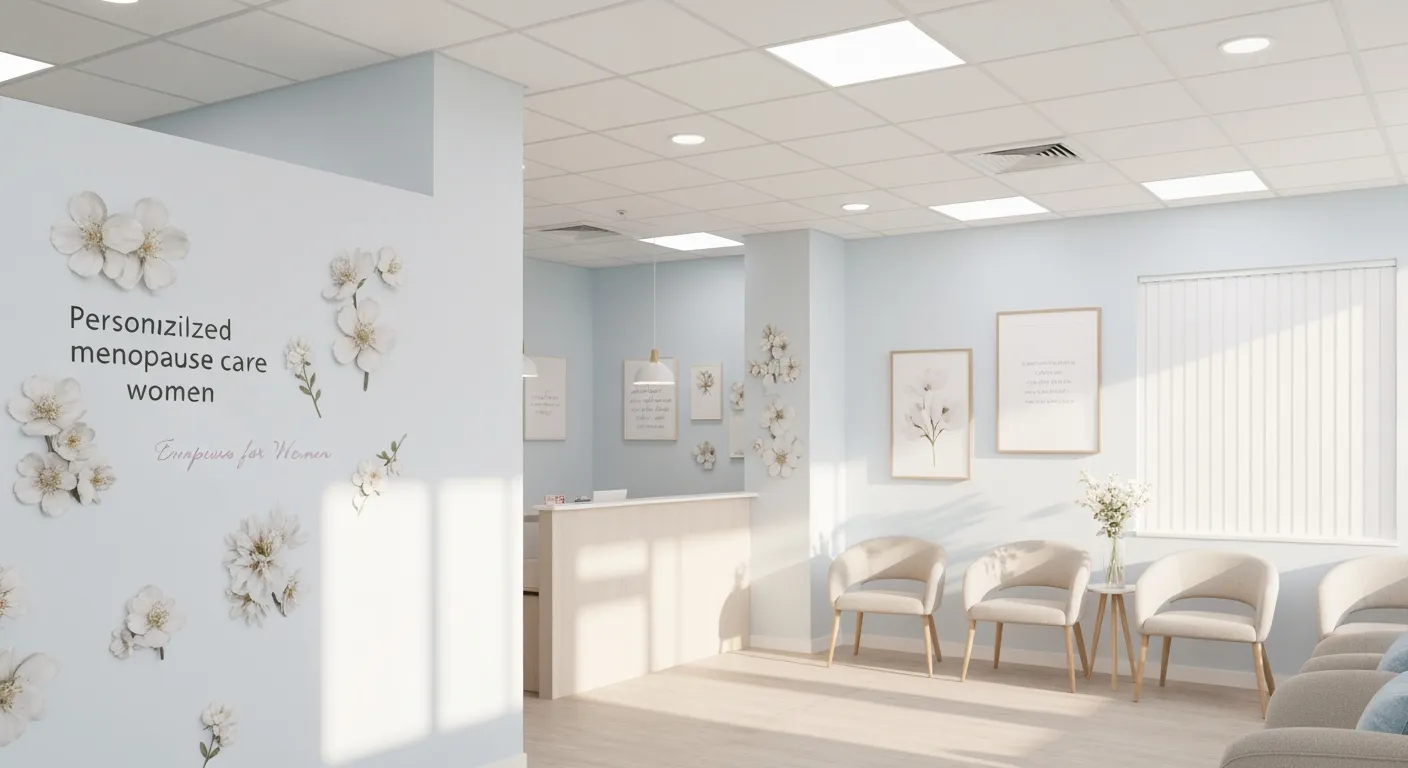Transforming Women’s Health: The Impact of Minimally Invasive OB/GYN Procedures on Recovery

Introduction to Minimally Invasive OB/GYN Procedures and Patient Benefits
Overview of Minimally Invasive Gynecologic Surgery
Minimally invasive gynecologic surgery (MIGS) is a modern surgical approach that uses small incisions or natural body openings to diagnose and treat various women's health conditions. These techniques include laparoscopy, hysteroscopy, robotic-assisted surgery, and vaginal access surgeries, offering patients a safer and more comfortable alternative to traditional open surgery.
Key Advantages for Patient Recovery
This approach significantly reduces pain, blood loss, and scarring, while lowering the risk of infection. Recovery times are notably shorter, allowing many patients to return home the same day or within 24 hours post-surgery. The minimally invasive methods promote faster healing and earlier return to normal activities, enhancing overall patient satisfaction and outcomes.
Types of Procedures Commonly Used
Common procedures using MIGS include treatment for uterine fibroids, endometriosis, ovarian cysts, abnormal uterine bleeding, pelvic pain, and infertility. State-of-the-art platforms like robotic surgery systems further improve surgical precision for complex cases, ensuring tailored and effective care for patients in Queens, NY, and beyond.
Clinical Advantages and Enhanced Recovery Protocols in Minimally Invasive Surgery

How do minimally invasive OB/GYN procedures impact postoperative pain management and recovery timelines?
Minimally invasive gynecologic surgeries are designed to reduce the trauma of traditional open surgeries by using smaller incisions and advanced technology such as laparoscopy and robotic assistance. This approach leads to significantly less postoperative pain and minimizes the need for opioid medications, which are often associated with side effects and slower recovery.
When combined with Enhanced Recovery After Surgery (ERAS) protocols, these surgeries offer even greater benefits. ERAS focuses on early mobilization, carbohydrate loading before surgery, and active pain management strategies that all contribute to diminishing postoperative discomfort. Many patients experience faster bowel function recovery and shorter hospital stays, frequently returning home the same day or within 24 hours.
What role do ERAS protocols play in improving patient outcomes after minimally invasive gynecologic surgery?
ERAS protocols standardize and optimize each phase of surgical care, from preoperative education to postoperative recovery. Patients undergoing minimally invasive gynecologic surgeries with ERAS benefit from coordinated steps that facilitate faster healing and improved surgical outcomes.
These protocols have been successfully implemented in diverse patient groups in Queens, NY, including adolescents, older adults aged 70 and above, and those undergoing complex gynecologic oncology treatments. They lead to reduced length of hospital stays, lower healthcare costs, and minimized opioid consumption.
Preoperative counseling helps set realistic recovery expectations and improves adherence to recovery plans. Carbohydrate loading boosts energy reserves for healing, while early mobilization reduces risks of complications like pneumonia and constipation. Advanced imaging and AI technologies integrated within ERAS frameworks enhance surgical precision, indirectly supporting quicker recoveries.
Overall, the synergy of minimally invasive techniques and ERAS protocols represents a significant advancement in gynecologic care, promoting safer surgery experiences and faster return to daily life across all patient ages and conditions in Queens, NY.
Technological Advances Underpinning Minimally Invasive Gynecologic Surgery

How do advanced technologies enhance minimally invasive OB/GYN procedures?
Advanced technologies have transformed minimally invasive gynecologic surgery, bringing unprecedented precision and safety to women's health care. In particular, robotic-assisted surgery combined with high-resolution imaging and artificial intelligence (AI) integration has greatly enhanced surgeons' capabilities.
Robotic systems like the da Vinci Xi robotic platform offer surgeons enhanced dexterity with articulated instruments that mimic hand movements but operate within small surgical spaces. These systems provide 3D, high-definition visualization, allowing surgeons to see anatomical details clearly and work meticulously. This results in increased surgical accuracy, less trauma to tissues, and reduced blood loss.
AI integration helps by analyzing real-time imaging data to guide decision-making and optimize surgical approaches. These technologies enable complex procedures to be performed through smaller incisions, minimizing patient pain, scarring, and the risks of infection.
Queens, NY, benefits from access to state-of-the-art facilities equipped with the latest robotic platforms, such as those at NewYork-Presbyterian and NYU Langone. These centers combine expert surgeon teams with cutting-edge tools ensuring patient-centered care. This environment supports procedures ranging from routine hysterectomies to complex oncologic surgeries, all with Enhanced Recovery After Surgery (ERAS) protocols.
Together, these technological advances reduce hospital stays, promote faster bowel function recovery, and support earlier discharge, even same-day surgery in many cases. Such innovations continue to improve safety and outcomes for women undergoing gynecologic surgeries in Queens, NY.
Postoperative Self-Care and Recovery Experience Following Minimally Invasive Surgery

What should patients expect during recovery and self-care after minimally invasive gynecologic surgery?
After undergoing minimally invasive gynecologic surgery, patients generally experience less pain and a quicker recovery compared to traditional open surgery. Recovery times vary with the surgery type, but patients often return home the same day or within 24 hours. Enhanced recovery after surgery (ERAS) protocols further support faster recovery and lower opioid use following gynecologic procedures.
Typical recovery timeline and pain management
Pain is usually manageable with over-the-counter medications like acetaminophen or ibuprofen. Surgeons often recommend a staggered dosing regimen to optimize relief and reduce side effects. If opioids are prescribed, they should be used cautiously due to risks such as constipation, aligning with postoperative care guidelines for managing discomfort after gynecologic surgery.
Managing common side effects like shoulder pain from laparoscopic gas
Shoulder or neck pain can occur due to the gas used during laparoscopy. This pain typically resolves within 24 to 48 hours with gentle movement, heat application, and medications like simethicone, as described in laparoscopic surgery recovery recommendations.
Incision care and signs of healing or infection
Incision sites usually heal within days to months. Normal healing signs include minimal redness and soreness, whereas increasing redness, swelling, foul discharge, or fever may indicate infection. Light vaginal bleeding can last up to eight weeks; during this time, patients should avoid tampons, intercourse, and douching. Detailed incision and bleeding care instructions emphasize monitoring healing and identifying infection.
Activity restrictions and recommendations for early mobilization
Early mobilization, such as walking shortly after surgery, helps prevent complications like pneumonia and constipation. Lifting heavy objects and strenuous exercise should be avoided for a few weeks, depending on the procedure. Early activity is encouraged in ERAS protocols for gynecologic surgery to support recovery and reduce hospital stays.
Importance of patient education and follow-up
Patient education on postoperative milestones, infection signs, and care instructions fosters adherence and satisfaction. Follow-up visits play a crucial role in monitoring recovery and managing any complications early. Local Queens, NY practices such as Women for Women OB/GYN and Advanced Women's Health in Flushing, NY provide tailored guidance to support rapid, safe recovery for women undergoing minimally invasive gynecologic surgeries.
Range of Minimally Invasive Gynecologic Procedures and Conditions Treated

What gynecologic conditions are commonly treated with minimally invasive surgery?
Minimally invasive gynecologic surgeries address a broad range of conditions prevalent among women. These include uterine fibroids, endometriosis, ovarian cysts, abnormal uterine bleeding, pelvic pain, and pelvic organ prolapse. Treatment options have expanded to utilize several surgical approaches tailored to patient needs and the specific condition. For more information, see minimally invasive surgery in gynecology.
Common surgical procedures: hysteroscopy, laparoscopy, robotic surgery, vNOTES
Hysteroscopy involves using a thin, lighted scope through the cervix to diagnose and treat issues such as abnormal bleeding, fibroids, polyps, and intrauterine scarring. It typically requires no incisions and offers a quick recovery. Learn more about hysteroscopy procedures.
Laparoscopy uses small abdominal incisions and a camera to treat conditions like endometriosis, ovarian cysts, and fibroids with less scarring and blood loss compared to open surgery. Additional details are available at laparoscopic gynecologic surgery.
Robotic-assisted surgery enhances precision with improved visualization and dexterity, making it beneficial for complex fibroid removal, hysterectomy, and oncology cases. See robotic gynecologic surgery advantages for more information.
vaginal natural orifice transluminal endoscopic surgery (vNOTES) is an innovative approach using the vagina as an entry point, resulting in no visible scars, less postoperative pain, and faster recovery. Explore the benefits of vNOTES surgery.
Benefits specific to procedure types and patient populations
Minimally invasive techniques enable same-day or shorter hospital stays, decreased blood loss, and significantly less postoperative pain across all age groups, including adolescent, elderly, and oncology patients. Fertility-preserving surgeries, such as targeted fibroid removal via laparoscopy or hysteroscopy, are especially valuable for women desiring future pregnancy. For a comprehensive overview, see Enhanced Recovery After Surgery (ERAS) protocols and ERAS benefits in gynecological procedures.
Fertility-preserving options
Fertility considerations are integral to treatment planning. Many minimally invasive procedures spare the uterus and ovaries when possible, preserving reproductive potential. Surgeons tailor approaches to balance effective treatment with maintaining fertility, which is a critical advantage over traditional open surgeries. For details on fertility-related surgeries and personalized gynecologic care, refer to fertility-focused gynecologic surgeries and minimally invasive gynecologic surgery at Johns Hopkins.
Personalized Women’s Healthcare and Minimally Invasive Surgery in Queens, NY

How does personalized care in a woman-led healthcare setting improve recovery from minimally invasive OB/GYN procedures?
In Queens, NY, woman-led healthcare providers and multidisciplinary teams play a vital role in delivering personalized care that significantly benefits recovery from minimally invasive gynecologic surgery procedures. These providers emphasize tailored treatment plans that consider each patient's unique health needs, symptoms, and lifestyle preferences. Personalized care often includes advanced diagnostic services such as gynecological sonography and 4-D obstetrical ultrasound, enabling precise assessment and targeted treatment.
This approach integrates minimally invasive surgical options such as laparoscopy, robotic-assisted surgery, and hysteroscopy, which are designed to reduce pain, minimize scarring, and shorten hospital stays. Women for Women OB/GYN LLC, a notable woman-led practice in Queens, exemplifies this by providing comprehensive care that covers both routine gynecologic health and complex surgical needs, including high-risk obstetrics.
Collaboration with specialized centers, like the Steven and Alexandra Cohen Children’s Medical Center that includes a neonatal intensive care unit, further enriches the patient experience. Such connections ensure seamless care for pregnant women requiring advanced maternal-fetal medicine support, which can optimize both surgical recovery and perinatal outcomes.
Patients benefit not only from advanced surgical technology and expert multidisciplinary management but also from supportive communication and education, fostering better adherence to postoperative protocols. This holistic, personalized model contributes to faster recovery, reduced complications, and heightened patient satisfaction, ultimately improving quality of life after minimally invasive gynecologic surgery in Queens.
Summary: Enhancing Recovery Through Minimally Invasive OB/GYN Procedures
Key Benefits of Minimally Invasive Surgery for Women
Minimally invasive gynecologic surgery offers less pain, reduced blood loss, and faster recovery. Smaller incisions lead to minimal scarring and often allow same-day discharge. These approaches treat conditions like fibroids, endometriosis, and ovarian cysts efficiently.
Role of Advanced Technology and ERAS Protocols
Advanced tools such as robotic-assisted surgery and high-resolution imaging improve precision. Enhanced Recovery After Surgery (ERAS) protocols reduce opioid use, promote early mobilization, and shorten hospital stays, enhancing overall recovery.
Importance of Patient Education and Personalized Treatment
Preoperative counseling and tailored care plans ensure patient engagement and adherence. Managing pain, incision care, and activity guidelines support smoother recovery and better outcomes.
Future Outlook for Women’s Health in Queens, NY
With cutting-edge minimally invasive options, patient-centered care, and ongoing innovation, women in Queens benefit from faster healing and improved quality of life in gynecologic treatment.




.png)